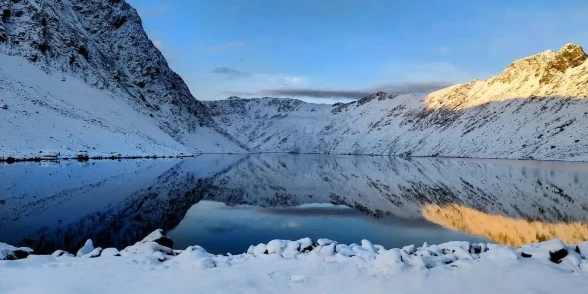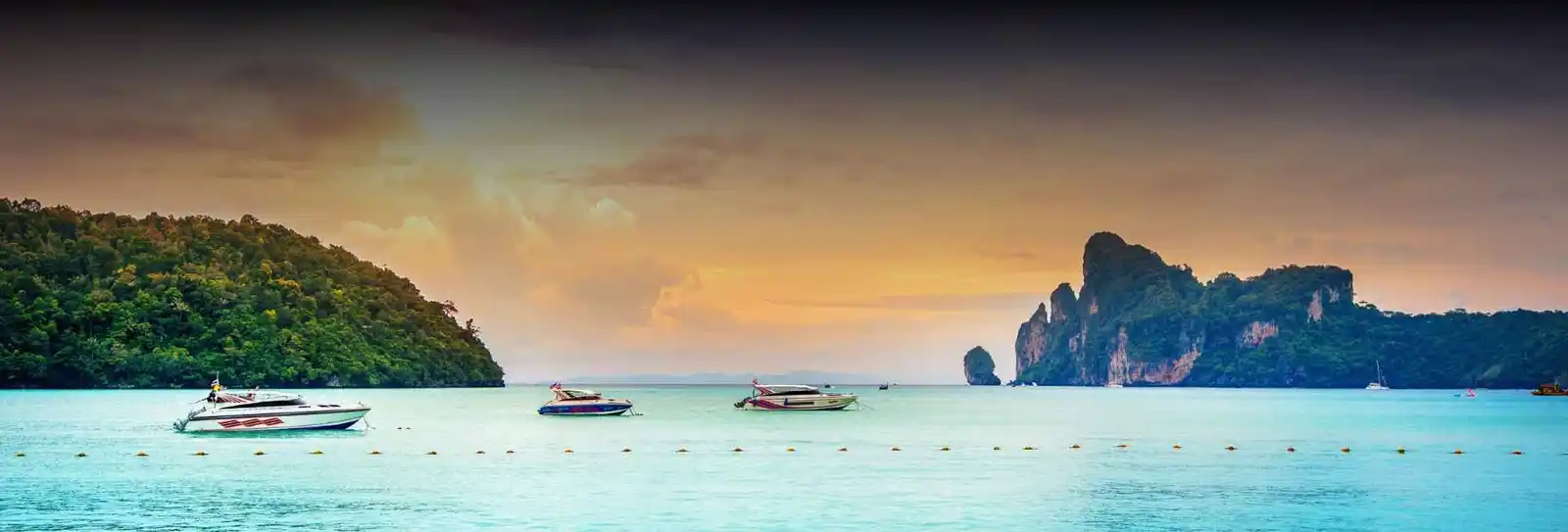
Starting your first Himalayan trek is a thrilling trip, but careful preparation is absolutely necessary to make sure you have a safe and enjoyable time. Starting with a hike appropriate for beginners, Triund, Kedarkantha, or Hampta Pass, depending on your degree of fitness and time constraints. Starting a fitness program 6–8 weeks ahead that stresses cardio, strength, and stamina, physical readiness is crucial. Knowing the symptoms of altitude sickness and giving time to progressively acclimate is essential because acclimatisation to great altitudes is vital. Carefully pack: A high-quality backpack, individual medicines, energy snacks, layers of clothing, a waterproof jacket, and sturdy hiking boots are necessities.Carry a first aid kit always, and drink enough water along your trip. Get familiar with the terrain, customs, and weather conditions of the area. Trek with a reputable trekking group or a guide, especially if you are unfamiliar with the area. Follow Leave No Trace rules to show respect for the environment and safeguard the pristine Himalayan region. Finally, get yourself ready emotionally. Because trips can be mentally and physically demanding, strong resilience and a positive outlook help much. Approached with the right mindset and planning, your first Himalayan trek might be a life-altering and highly fulfilling voyage.How to Prepare for Your First Himalayan Trek1. Pick Your Trek CorrectlyYour first Himalayan trek must choose a trek that fits your level of comfort and physical capacity. Beginning with an approachable trail enables you to gently enter the difficulties of high-altitude trekking without feeling overburdened. Some great possibilities are:Triund (Himachal Pradesh): Perfect for first-timers, Triund (Himachal Pradesh) is a brief, picturesque hike from McLeod Ganj. It can be carried out in a day or two and provides sweeping vistas of the Dhauladhar range.Kedarkantha: Uttarakhand's Kedarkantha is a traditional winter hike famous for its snow-covered paths and 360-degree mountain views. Perfect for first-timers wishing to try snow trekking.Hampta Pass (Himachal Pradesh): Perfect for those seeking a little variety without too much trouble, this mid-level walk changes from rich green valleys to stark, dramatic landscapes.Sandakphu (West Bengal/Sikkim border): Known as "Trekkers' Wonderland," Sandakphu offers spectacular vistas of four of the five highest peaks in the world, including Everest and Kanchenjunga (West Bengal/Sikkim border). First-timers will find the trail simple to control and well-marked.2. Get Physically FitBecome Physically Fit. Good physical shape is required for trekking in the Himalayas, especially considering the thinner air and rough environment at higher altitudes. Advance good body preparation guarantees that you relish the occasion free from needless strain or risk of damage. Commencing 6–8 weeks before the journey, combine the following to start your training:Cardio Training: Develop stamina and lung capacity by doing brisk walking, jogging, swimming, or cycling 30 to 45 minutes, 4 to 5 days per week.Strength Training: Concentrate on workouts that build leg, core, and lower back strength. Add step-ups, lunges, planks, and squats to uneven paths to enhance endurance and equilibrium.Practice Hikes: Simulate genuine trekking circumstances by carrying loaded backpacks (about 6–8 kg) on weekend hikes. This helps your body develop tolerance for weighted, lengthy distances.3. Acclimatise correctlyEssential while hiking in the Himalayas to avoid Acute Mountain Sickness (AMS), brought on by fast altitude gain, is acclimatisation. Ascend slowly to let your body adapt; no more than 300–500 meters daily above 2,500 meters. Eat high-energy foods, stay well-hydrated, and give up cigarettes and drinking. For longer trips, plan rest days to aid your body in adjusting. Watch for nausea, headaches, or dizziness. Should they continue, drop straight away. Correct acclimatisation improves your capacity to appreciate the amazing beauty of the Himalayas without endangering your health, in addition to guaranteeing your safety.4. Pack Smart: Checklist of NecessitiesAn easy and safe Himalayan walk depends on careful packing. Bring only what you need to maintain your bag light but yet full. Here is a rudimentary essentials checklist:Clothing: layered clothing (base layer, fleece, down jacket, waterproof outer layer), quick-drying t-shirts, thermalwear, gloves, woollen hat, sun hat, and extra socks/undergarments.Footwear: Lightweight sandals for camp and waterproof trekking boots with high ankles.Personal goods: lip balm, sunglasses (UV protected), light towel, tissues/toilet paper, and toiletries; sunscreen. Health and Safety: basic first-aid kit, recommended medications, ORS, hand sanitiser, blister care.Food and Water: Dry fruits, energy bars, a reusable water bottle (1–2L), and purifying tablets.Others: Headlamp or torch, power bank, trekking poles, identification proof, permits, and some cash.5. Stay Mentally PreparedEspecially in the delicate Himalayas, responsible trekking calls for respect of the environment, other hikers, and local communities. Good trekking etiquette not only guarantees everyone's enjoyment but also helps to conserve the area's natural and cultural beauty. Always follow the Leaves. Carry back all of your garbage, including bottles and wrappers; never drop anything. This is the No Trace policy. Respect local people by saying good greetings, requesting permission before taking photos, dressing simply, and following cultural customs. Yield to uphill hikers on the path and give right of way to pack animals such as mules or yaks by moving aside securely. To preserve the peace of the mountains and prevent upsetting wildlife, minimise noise. Be punctual, helpful, and encourage teamwork inside your team; assist those who might need it. These basic habits help to protect the environment and establish meaningful connections along the way.6. Be mentally preparedTrekking in the Himalayas is as great a mental challenge as it is a physical one. Changes in weather, altitude, tiredness, and strange terrain will test your patience and resolve. Maintaining mental strength enables you to better enjoy the trip and adjust to unforeseen circumstances. Have reasonable expectations and appreciate the uncertainty of nature. There might be obstacles, pain, or steep ascent, but maintaining a good perspective may transform everything. Celebrate every milestone by breaking the journey into smaller objectives. Practice awareness, stay calm during disappointments, and help your fellow trekkers.Why Book with escape2exploreWhen exploring Himalayan Treks and beyond, escape2explore stands out as a trusted name in adventure and experiential travel. Here’s why hundreds of travellers choose us for their getaways:Trusted, Well-Reviewed Local Operator: escape2explore has gained the trust of thousands of content tourists all over India. With persistent positive feedback and an unblemished reputation for delivering quality experiences, we assure you that your experience will be hassle-free, memorable, and value-packed. Our insider local knowledge guarantees that you will always be in safe hands.Seasoned Guides: Our trips are led by friendly, trained, and professional guides who are passionate about the outdoors and your safety. Whether it's a beach trek, a cultural tour, or a spiritual walk through temples, our team knows the terrain, the stories, and how to make each moment count.Safe & Curated Itineraries: Your safety is our number one priority. Our tour packages are thoughtfully crafted with safety measures, researched accommodations, and easy travel arrangements. We take care of the details so you can have the experience hassle-free and worry-free.Unique Experience That You Won't Find Anywhere Else: With escape2explore, you discover more than the tourist attractions. We go off the beaten track with hidden beaches, unusual treks, offbeat cultural destinations, and true interactions.Read: Manaslu Treks in India | What to wear|winter treks in India |Camping vs Homestay|Weekend Treks from Bangalore


